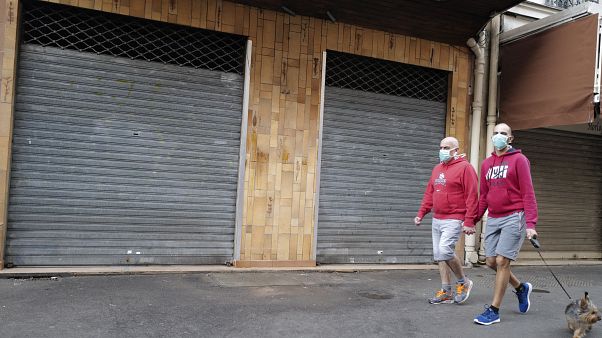COVID-19 lockdown: What is France’s exit strategy?

France urgently needs an exit strategy from its COVID-19 lockdown to avoid a second wave of coronavirus infections overwhelming the country’s healthcare system, a report has claimed.
The study, published by the National Institute of Health and Medical Research in Paris, warns that even if lockdown measures were loosened in France by the end of May or even June, extensive testing is needed to prevent a surge of new infections.
It claims that ending the lockdown in France without testing, continued isolation for at-risk residents and social distancing measures in place could lead to a peak in severe cases that would require 40-times the current level of intensive care unit (ICU) beds.
It was released just 24 hours before President Emmanuel Macron is scheduled to address the nation on Monday night. He is widely expected to extend the nationwide lockdown that has been in place in France since March 17 to slow the spread of the coronavirus.
- Coronavirus: France death toll 14,400 ahead of Macron speech on lockdown
- Japanese cities empty after government toughens coronavirus measures
- Coronavirus Live: China reports highest tally of new cases in over a month
The lockdown has seen millions of people across France confined to their homes, only permitted to leave to buy essential goods, visit doctors or exercise. As a result of social distancing, contact between people in France have been reduced by 80%, the report says.
That is higher than in the UK, where lockdown restrictions are less severe than on the continent, but lower than in Wuhan, the original epicentre of the virus, which was 86% and Shanghai, where the reduction in contact during its months-long lockdown was as high as 89%.
But while the lockdown in France has led to a massive reduction in the reproductive number of COVID-19 - the speed at which it spreads from person to person - it will need to continue into the month of May and ideally until the end of June, the report warns.
This would allow the health authorities to begin aggressively seeking out new cases, mass testing and then isolating individuals who test positive, while gradually allowing some areas of the workforce to return to work.
“Lifting lockdown with no exit strategy in place will inevitably lead to large rebound effects, as the immunity of the population is estimated to be still very low - from 1% to 6%,” the report says.
“Control of the epidemic without overwhelming the healthcare system requires coupling social distancing measures with aggressive testing to promptly identify infectious individuals and isolate them.”
But even in these cases, it concludes, schools will need to remain closed and older residents isolated, as well as strict social distancing kept in place for the remainder of 2020.
The pandemic may permanently change other aspects of life too: teleworking, once extremely rare in Europe, may become the norm for many people even after the crisis is over, it says.


